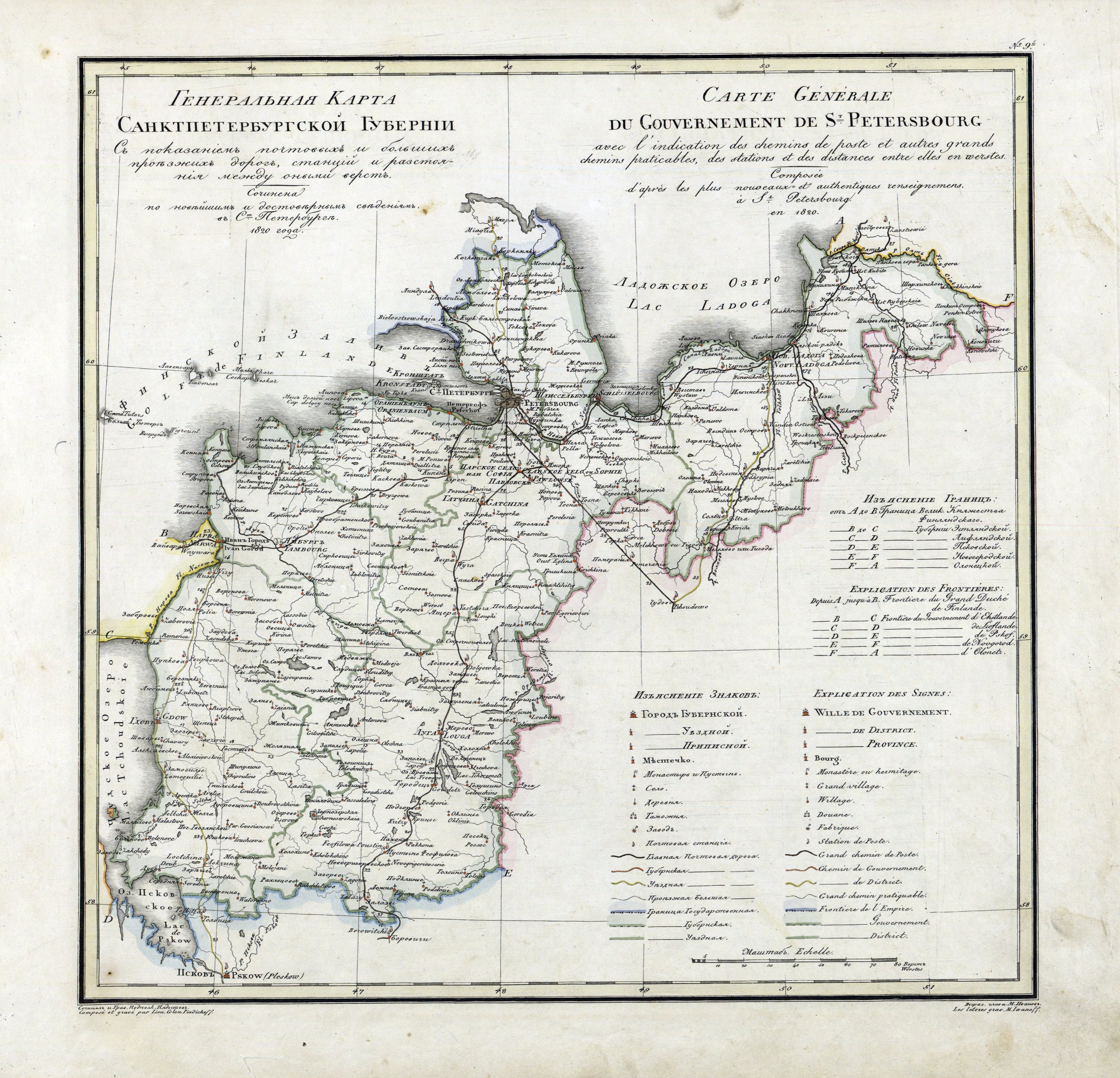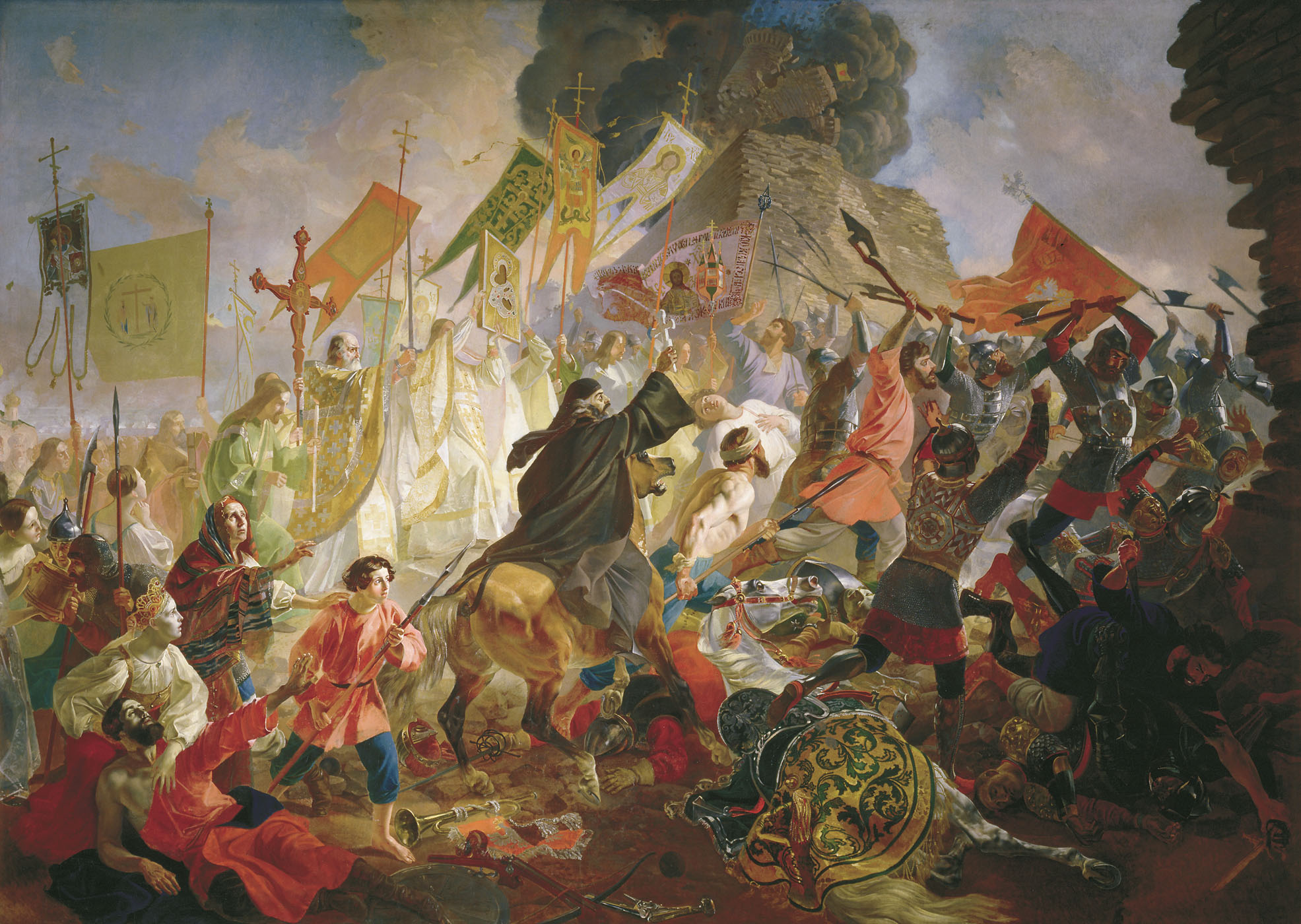|
Opochetsky District
Opochetsky District (russian: Опо́чецкий райо́н) is an administrativeLaw #833-oz and municipalLaw #420-oz district (raion), one of the twenty-four in Pskov Oblast, Russia. It is located in the southwest of the oblast and borders with Pushkinogorsky District in the north, Novorzhevsky District in the northeast, Bezhanitsky District in the east, Pustoshkinsky District in the southeast, Sebezhsky District in the south, and with Krasnogorodsky District in the west. The area of the district is . Its administrative center is the town of Opochka. Population: 23,973 ( 2002 Census); The population of Opochka accounts for 62.1% of the district's total population. Geography The whole of the district lies in the basin of the Velikaya River, and, consequently, of the Narva River. The Velikaya crosses the district from south to north, and the town of Opochka is located on its banks. The biggest tributaries of the Velikaya within the district are the Issa (left), the Alolya (r ... [...More Info...] [...Related Items...] OR: [Wikipedia] [Google] [Baidu] |
Velikaya River
The Velikaya () is a river in Novosokolnichesky, Pustoshkinsky, Sebezhsky, Opochetsky, Pushkinogorsky, Ostrovsky, Palkinsky, and Pskovsky Districts of Pskov Oblast, as well as in the city of Pskov in Russia. It is a major tributary of Lake Peipus and belongs to the drainage basin of the Narva. It is long, and the area of its basin . The name of the river literally means "Grand" or "Great" in Russian. The towns of Opochka, Ostrov and Pskov are located on the banks of the Velikaya. The principal tributaries of the Velikaya are the Alolya (right), the Issa (left), the Sorot (right), the Sinyaya (left), the Utroya (left), the Kukhva (left), the Cheryokha (right), and the Pskova (right). The source of the Velikaya is located in the Bezhanitsy Hills in the northwest of Novosokolnichesky District. The river flows south through a system of lakes to Lake Veryato, where it turns west. It accepts the Alolya from the right and gradually turns north, passing through the town of Opoch ... [...More Info...] [...Related Items...] OR: [Wikipedia] [Google] [Baidu] |
Pskov Governorate
Pskov Governorate (russian: link=no, Псковская губерния, ''Pskovskaya guberniya'') was an administrative division (a '' guberniya'') of the Russian Empire and Russian SFSR, which existed from 1772 until 1777 and from 1796 until 1927. Its seat was located in Opochka between 1772 and 1776, and in Pskov after 1776. The governorate was located in the west of Russian Empire and bordered (after 1796) Saint Petersburg Governorate in the north, Novgorod Governorate in the northeast, Tver Governorate in the east, Smolensk Governorate in the southeast, Byelorussia Governorate (since 1802, Vitebsk Governorate) in the south, and the Governorate of Livonia in the west. In terms of modern administrative division of Russia, the area of the governorate is currently split between Pskov, Tver, and Novgorod Oblasts. The former border between Pskov Governorate and the Governorate of Livonia still largely corresponds to the state border between Russia in the east and Estonia and La ... [...More Info...] [...Related Items...] OR: [Wikipedia] [Google] [Baidu] |
Novgorod Governorate
Novgorod Governorate (Pre-reformed rus, Новгоро́дская губе́рнія, r=Novgorodskaya guberniya, p=ˈnofɡərətskəjə ɡʊˈbʲernʲɪjə, t=Government of Novgorod), was an administrative division (a '' guberniya'') of the Russian Empire and the Russian SFSR, which existed from 1727 to 1776 and from 1796 to 1927. Its administrative center was in the city of Novgorod. The governorate was located in the northwest of the European part of the Russian Empire. History The governorate was established in 1727 from Belozersk, Novgorod, Pskov, Tver and Velikiye Luki Provinces of St. Petersburg Governorate. It was abolished by a decree (''ukase'') of Catherine II on , 1776, which established Novgorod and Tver Viceroyalties instead. Novgorod Viceroyalty included Novgorod and Olonets Oblast, whereas Tver Viceroyalty was made of the former Tver Province. The viceroyalty was never formally abolished, however, after a number of administrative transformations it was ... [...More Info...] [...Related Items...] OR: [Wikipedia] [Google] [Baidu] |
Saint Petersburg Governorate
Saint Petersburg Governorate (russian: Санкт-Петербу́ргская губе́рния, ''Sankt-Peterburgskaya guberniya''), or Government of Saint Petersburg, was an administrative division (a '' guberniya'') of the Tsardom of Russia, the Russian Empire, and the Russian SFSR, which existed during 1917–1927. Establishment Ingermanland Governorate (, ''Ingermanlandskaya guberniya'') was created from the territories reconquered from the Swedish Empire in the Great Northern War. In 1704 prince Alexander Menshikov was appointed as its first governor, and in 1706 it was first Russian region designated as a ''Governorate''. According to the Tsar Peter the Great's edict as on , 1708,Указ об учреждении губерний и � ... [...More Info...] [...Related Items...] OR: [Wikipedia] [Google] [Baidu] |
Peter The Great
Peter I ( – ), most commonly known as Peter the Great,) or Pyotr Alekséyevich ( rus, Пётр Алексе́евич, p=ˈpʲɵtr ɐlʲɪˈksʲejɪvʲɪtɕ, , group=pron was a Russian monarch who ruled the Tsardom of Russia from to 1721 and subsequently the Russian Empire until his death in 1725, jointly ruling with his elder half-brother, Ivan V until 1696. He is primarily credited with the modernisation of the country, transforming it into a European power. Through a number of successful wars, he captured ports at Azov and the Baltic Sea, laying the groundwork for the Imperial Russian Navy, ending uncontested Swedish supremacy in the Baltic and beginning the Tsardom's expansion into a much larger empire that became a major European power. He led a cultural revolution that replaced some of the traditionalist and medieval social and political systems with ones that were modern, scientific, Westernised and based on the Enlightenment. Peter's reforms had a lasting ... [...More Info...] [...Related Items...] OR: [Wikipedia] [Google] [Baidu] |
Administrative Divisions Of Russia In 1708–1710
The administrative division reform of 1708 was carried out by Russian Tsar Peter the Great in an attempt to improve the manageability of the vast territory of Russia. Prior to the reform, the country was subdivided into uyezds and volosts, and in the 17th century the number of the uyezds was 166. Creation On , 1708, Peter issued an edict An edict is a decree or announcement of a law, often associated with monarchism, but it can be under any official authority. Synonyms include "dictum" and "pronouncement". ''Edict'' derives from the Latin edictum. Notable edicts * Telepinu Proc ... dividing Russia into eight governorates ('' guberniyas'').Указ об учреждении губерний и о росписании к ним город� ... [...More Info...] [...Related Items...] OR: [Wikipedia] [Google] [Baidu] |
Pskov
Pskov ( rus, Псков, a=pskov-ru.ogg, p=pskof; see also names in other languages) is a city in northwestern Russia and the administrative center of Pskov Oblast, located about east of the Estonian border, on the Velikaya River. Population: Pskov is one of the oldest cities in Russia. It served as the capital of the Pskov Republic and was a trading post of the Hanseatic League before it came under the control of the Grand Duchy of Moscow. History Early history Pskov is one of the oldest cities in Russia. The name of the city, originally Pleskov (historic Russian spelling , ''Plěskov''), may be loosely translated as "he townof purling waters". It was historically known in English as Plescow. Its earliest mention comes in 903, which records that Igor of Kiev married a local lady, Olga (later Saint Olga of Kiev). Pskovians sometimes take this year as the city's foundation date, and in 2003 a great jubilee took place to celebrate Pskov's 1,100th anniversary. The f ... [...More Info...] [...Related Items...] OR: [Wikipedia] [Google] [Baidu] |
Lake Kamennoye
A lake is an area filled with water, localized in a basin, surrounded by land, and distinct from any river or other outlet that serves to feed or drain the lake. Lakes lie on land and are not part of the ocean, although, like the much larger oceans, they do form part of the Earth's water cycle. Lakes are distinct from lagoons, which are generally coastal parts of the ocean. Lakes are typically larger and deeper than ponds, which also lie on land, though there are no official or scientific definitions. Lakes can be contrasted with rivers or streams, which usually flow in a channel on land. Most lakes are fed and drained by rivers and streams. Natural lakes are generally found in mountainous areas, rift zones, and areas with ongoing glaciation. Other lakes are found in endorheic basins or along the courses of mature rivers, where a river channel has widened into a basin. Some parts of the world have many lakes formed by the chaotic drainage patterns left over from the last ice ... [...More Info...] [...Related Items...] OR: [Wikipedia] [Google] [Baidu] |
Lake Velye
A lake is an area filled with water, localized in a basin, surrounded by land, and distinct from any river or other outlet that serves to feed or drain the lake. Lakes lie on land and are not part of the ocean, although, like the much larger oceans, they do form part of the Earth's water cycle. Lakes are distinct from lagoons, which are generally coastal parts of the ocean. Lakes are typically larger and deeper than ponds, which also lie on land, though there are no official or scientific definitions. Lakes can be contrasted with rivers or streams, which usually flow in a channel on land. Most lakes are fed and drained by rivers and streams. Natural lakes are generally found in mountainous areas, rift zones, and areas with ongoing glaciation. Other lakes are found in endorheic basins or along the courses of mature rivers, where a river channel has widened into a basin. Some parts of the world have many lakes formed by the chaotic drainage patterns left over from the last ic ... [...More Info...] [...Related Items...] OR: [Wikipedia] [Google] [Baidu] |
Alolya River
The Alolya (russian: Алоля, the Alol, russian: Алоль) is a river in Opochetsky, Novorzhevsky, Bezhanitsky, and Pustoshkinsky Districts of Pskov Oblast in Russia. It is a right tributary of the Velikaya. It is long, and the area of its basin . The source of the Alolya is Lake Arno on the Bezhanitsy Hills in Opochetsky District. It flows east, forming the border between Opochetsky and Novrozhevsky Districts, then downstream forms the border between Opochetsky and Bezhanitsky Districts and departs east from the border. The Alolya flows through Lake Kudeverskoye and turns southwest, where it again forms the border between Opochetsky and Bezhanitsky Districts, and downstream - between Opochetsky and Pustoshkinsky Districts. It accepts the Tsipilyanka from the left and departs from the border south into Pustoshkinsky District. The mouth of the Alolya is close to the village of Verbilovo. The drainage basin of the Alolya includes many lakes, the biggest of which is Lake K ... [...More Info...] [...Related Items...] OR: [Wikipedia] [Google] [Baidu] |






_2020.jpg)